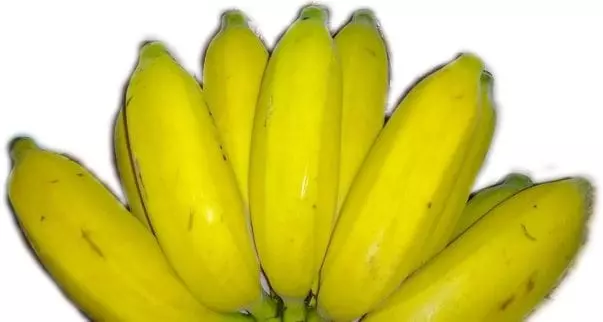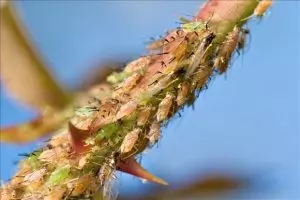This article was updated on 12 Oct 2014. I thought I'd knock-up this quick guide to making banana chips, whilst I think of it before I end up archiving my images and forgetting about them – as I can do.
Banana chips don't need any big introduction and they are so simple to make that I hesitated to write the article at all because I wasn't sure if anyone would get any value from it. Plus, there are other articles on the net about how it's done. However, I figured it wasn't too long ago when I used to buy this simple snack from the supermarket myself and wondered how it was made. Therefore, I guess if one person drops in on this article and gets something out of it that'll be good enough for me.

A few years back, I knew banana chips were dried somehow but I wasn't sure if the process was easy enough to do at home. Of course, I found out making banana chips is very easy after I got my Excalibur food dehydrator and started experimenting. Nevertheless, there still are some little hints, tricks, and advice worth sharing to make the task easier for the first time.
Actually, I was pretty much forced into making banana chips after I produced my first bunch of home-grown bananas and then subsequently realised how fast a big bunch of bananas ripen. And, when you have a big bunch of these yellow fruits sitting in the living room getting softer there's only so many smoothies a person can drink before one feels like a big fat banana themselves.
Yes, I do know there are many ways to use a glut of bananas besides smoothies but I love quick and easy solutions to oversupplies of fruit and veg and that's how dehydration comes in.
How to make banana chips?
Firstly, I don't think a step-by-step guide with images at each point is really necessary to demonstrate how to make banana chips so here's a dot point:
-
Oversupplies of bananas – Eating a banana fresh is the best way to eat a banana. However, if you grow your own bananas or come across a cheap fire-sale of bananas at the farmers market or grocer then take full advantage and buy a ton'ov'em.
-
Dehydrator – You'll need a dehydrator and I use an Excalibur food dehydrator because
 that's what my research on dehydrators led me to buy several years ago and mine hasn't missed a beat since. However, any dehydrator will do fine and these days the "no-name" Chinese dehydrators similar to mine are very good and much cheaper than what I paid (there's a review on a no-name dehydrator by one of our forum members on our forum) he purchased his dehydrator on eBay here. If you have purchased one of those other brands and are happy with its performance let me know about it on our forum www.selfsufficientculture.com and I'd really appreciate it. There are more links to where you can buy a dehydrator from at the end of this post.
that's what my research on dehydrators led me to buy several years ago and mine hasn't missed a beat since. However, any dehydrator will do fine and these days the "no-name" Chinese dehydrators similar to mine are very good and much cheaper than what I paid (there's a review on a no-name dehydrator by one of our forum members on our forum) he purchased his dehydrator on eBay here. If you have purchased one of those other brands and are happy with its performance let me know about it on our forum www.selfsufficientculture.com and I'd really appreciate it. There are more links to where you can buy a dehydrator from at the end of this post. -
Slicing – Cut the bananas into thin round pieces and take heed of the following:
-
Use a sharp stainless steel knife (no cheap steel – makes the banana go dark brown), or, you can get banana slicers;
-
Try and keep the slice width as regular as possible; and
-
Do not slice too thick 3-4 mil max (less than ½ cm or about 1/8th inch);
-
-
Trays – Place the sliced banana on the dehydrator trays in one single layer. As a tray becomes full transfer it to the running dehydrator immediately because as we all know bananas have a tendency to go brown and get soft if left out too long. And, soft brown bananas will just get sticky and make it harder to remove from the dehydrators tray mesh sheeting when done.
-
Settings – Place the temperature setting on fruits or “live foods” according to your dehydrators instructions and set the timer for about 24 hours. You can check it sooner but bananas usually take a long time to dehydrate.
-
Ready? – The slices of banana are ready when they snap easily and don't just bend in the fingers. Leave a few pieces cool first before trying the snap test as it gives a better indication to whether they are ready or not.
-
Storage – Airtight containers or bags in the pantry. They'll last for ages.
Other Considerations
 Longer storage
Longer storage
For longer storage or places with high humidity, little oxygen remover bags are a handy addition placed in the container or packet – you know, the little plastic pads you sometimes find in packaged foods? You can buy them in bulk and use them at home too for home-made dry food storage and they work by consuming the oxygen within the package inhibiting the growth of any nasties.
Having said that, I find if the chips are being eaten and the container opened regularly the chips will eventually lose the “snap,” however, no one seems to mind a chewy banana chip in my home as the taste is still good and the chewiness turns them into banana lollies instead. Also, there's no harm in giving them another whirl in the dehydrator to firm them up again if you really must have them crunchy.
Citric acid
I don't use citric acid to prevent the banana chips from going brown as light brown banana chips look natural enough to me and my family. However, if you wanted them to look “whiter” I've read spraying or dipping the slices in citric acid (or lemon juice) will help.
Add extra sugar?
Some like to dust with icing sugar before (or after) dehydrating – it isn't necessary, dried bananas are as sweet as fresh ones and sometimes sweeter. Although, a little cinnamon sugar sprinkled over before serving at a party might be nice – haven't tried it myself.
What's in commercial banana chips?
If you read the label on a packet of commercial banana chips you might need to have your smart phone handy to decipher the chemical coding of some ingredients… I guess commercially manufactured banana chips need to look good on the shelf and store for extra long periods, whereas, we don't have that pressure at home.

Conclusion
We all know fruit is good for us and bananas are an exceptionally nutritious fruit for us and our children to eat. Dried banana is just as good for us and makes for an easy no mess snack for any person especially good for popping into kids lunch boxes.
Making dried banana chips is an easy process and it's also less expensive than buying the commercial type, which often contain additives written on the packet that many of us find unfamiliar.
Go on – make some dried banana, so this article wasn't written in vain… 🙂
You might also like reading Dehydrating Cherry Tomatoes.
Feel free to use the comment section below and have your say (no email is required). Or, visit our preserving section on our forum and join up (for free) and chat with us!
Handy Links
If you're looking to buy a food dehydrator I recommend the rectangle or square units (whatever brand you decide on) because these units blow air more evenly over the trays, than say, the round units. Here are some places to check out dehydrators online:
Here's a video I knocked up on banana chips tips!
https://www.youtube.com/watch?v=EMry1bFwSKs
Thanks for reading and thanks for your support,
Look, and see the Earth through her eyes
Mark Valencia – Editor SSM

 that's what my research on dehydrators led me to buy several years ago and mine hasn't missed a beat since. However, any dehydrator will do fine and these days the "no-name" Chinese dehydrators similar to mine are very good and much cheaper than what I paid (there's a review on a no-name dehydrator by one of our forum members on our forum)
that's what my research on dehydrators led me to buy several years ago and mine hasn't missed a beat since. However, any dehydrator will do fine and these days the "no-name" Chinese dehydrators similar to mine are very good and much cheaper than what I paid (there's a review on a no-name dehydrator by one of our forum members on our forum) 










